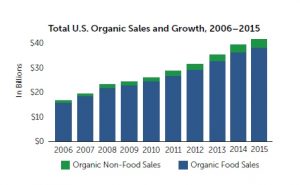National Geographic ran a June 15, 2017 story by Sarah Gibbens entitled “Renewable Energy Record Set in the U.S.” It’s opening paragraph reports the good news –
“The U.S. set a new renewable energy milestone in March, in data released Wednesday. For the first time, wind and solar accounted for 10 percent of all electricity generation, with wind comprising 8 percent and solar coming in at 2 percent.”
Texas leads the nation in overall renewable electricity production, with wind accounting for the lion’s share. But Iowa produces a greater proportion of its total electical energy needs from renewables – 37% — more than any other state.
Texas and Iowa leading the charge on renewable energy? What gives? The National Geographic story has little to say on this question, other than growth in renewables is private sector driven and clearly reflects relative costs and profit potential.

Couple this observation with the recently reported fact that despite a cut in OPEC oil production, the global glut of oil grows and prices are still headed downward. Germany is way ahead of schedule in reaching aggressive, country-wide renewable energy goals, and a long list of companies have reached, or are quickly moving toward zero-net dependence on fossil fuel sources of energy.
Perhaps sooner than anyone imagined, renewable sources of energy, along with some natural gas of course, will become far cheaper than oil- and coal-based energy, and the electric grid will “flip.”
Organic food and farming represents the same greener, healthier, more sustainable future for agriculture and the food system, as does renewable energy in the electricity sector.
Again, much like renewables, the systems and technology needed to expand organic farming and ranching in the U.S. and globally exist, are proven, and scalable. Production costs on most organic farms are stable or falling, yet they continue rising on most conventional farms.
The public is increasingly aware of the collateral damage associated with fossil fuel use and chemical-intensive, conventional agricultural systems. Demand for energy sources and food that sustains life in all its dimensions is bound to grow.
Yet in a May 19, 2017 press release, the Organic Trade Association (OTA) reports that sales of organic food accounted for under 5% of overall food sales in 2015. The release, “U.S. organic sales post new record of $43.3 billion in 2015”, goes on to report the largest gain ever in 2015 for the total organic sector sales.

Clearly, efforts to “grow” organic farming have been underway just as long as the effort to expand the wind and solar energy industries, but with very different outcomes.
In terms of reach across the landscape, organic farming accounts for perhaps 2% of national cropland acreage. While organic systems reliably deliver significant public health, and soil health, water quality, and climate change benefits, the scale of adoption is far too low to have a meaningful impact on agriculture’s environmental footprint.
Why have renewables taken off and organic food and farming has not?
Why are Texas and Iowa setting the pace in investment and growth in renewables, but doubling down on conventional agricultural systems that are falling apart and triggering progressively more worrisome “externalities”?

Why has the Iowa State legislature cut state support for the Leopold Center for Sustainable Agriculture at Iowa State University? Why has rapid growth in organic fruit and vegetable production in the western U.S. slowed, despite huge need and demand worldwide for high-quality, nutritious, and safe fresh and processed fruit and vegetable products?
I wish I had the answers. One thing is almost certain – consumer demand and economics will drive future change in both the energy and food sector.
The lack of public understanding of the costs, risks, and benefits of conventional agricultural systems and conventional food relative to organic is a major hurdle, and one that most government agencies are compelled by political forces to sustain, if not heighten.
Regrettably in the U.S., there has been a battle raging over the future of food the last few decades that has pitted conventional farmers and food businesses against organic farmers and food businesses. The collateral damage flowing from this unnecessary struggle has grown increasingly serious. It clouds the path forward and too often leads to one step forward, two steps back.
Political leaders in Washington and the USDA want to at least retain current funding levels for food and agriculture research, with national commodity groups and trade associations calling the shots regarding how the money is spent.
It is a safe bet most of it will be invested in shoring up conventional production systems, and in efforts to deal with the environmental and human health problems deeply rooted in how we produce food in America, and the food quality and dietary choices we make.
But the path forward remains, to me, largely a mystery. I welcome any comments and suggestions on why renewable energy seems to be taking off and organic food and farming has not.
Also, feel free to share ideas on what is needed to move along constructive change in both the energy and food sectors, so we can keep on trucking, light up the night, and enjoy three squares a day.
[A Note re Comments – Comments submitted to Hygeia Analytics are moderated. We spare our readers from all Viagra ads and diatribes, and are battling the bots on a daily basis. Please share your thoughts in a way that is respectful of the views of other people, ideally with a dose of facts and references to solid data and science. When we feel we have something useful to add, we will reply.]Sources:
Sarah Gibbens, “Renewable Energy Record Set in U.S.,” National Geographic, published online June 15, 2017.
Organic Trade Association, “U.S. organic sales post new record of $43.3 billion in 2015,” Press Release, published online May 19, 2016.

